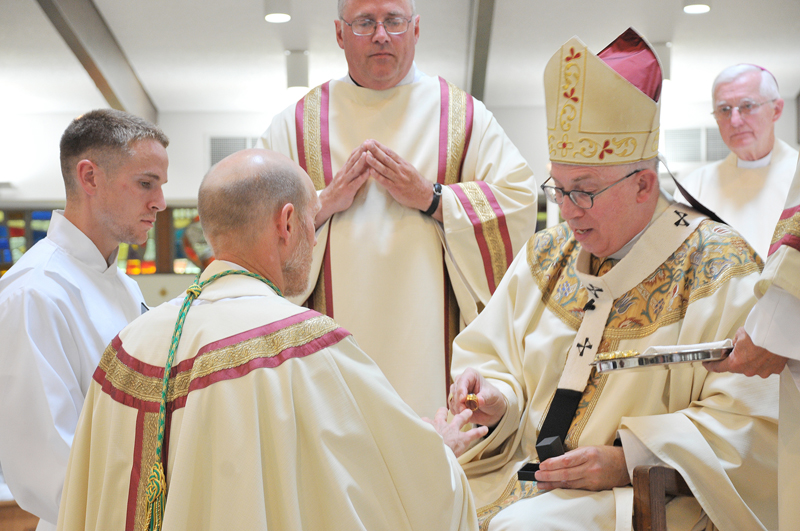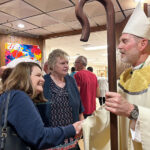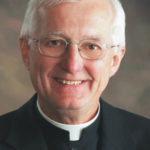
During the ordination and installation Mass for Bishop Thomas Zinkula, he was anointed with Sacred Chrism by Archbishop Michael Jackels. He was then invested with the episcopal ring, miter and crosier (pastoral staff). Here is an explanation of these items:
The episcopal ring, worn on the third finger of the right hand, signifies the bishop’s spousal love for and fidelity to the Bride of God, the church and especially for the diocese over which he has been given responsibility. The use of the Episcopal ring may date back to the 3rd century and is clearly documented by the 5th century.
The miter (or mitre) is the liturgical headdress proper to bishops in the Latin Church. The investiture with the miter signifies his resolve to pursue holiness. Its use dates back to the 11th century.
The pastoral staff (or crosier) is shaped like a shepherd’s crook, a reminder of the bishop’s pastoral care; his duty in guiding and governing the church entrusted to him. It is mentioned as early as the 4th century.
Archbishop Jackels led Bishop Zinkula to the cathedra (bishop’s chair), which is a sign of his teaching office and pastoral ministry in the local church.
There, Bishop Zinkula exchanged the Sign of Peace with all the bishops present.











